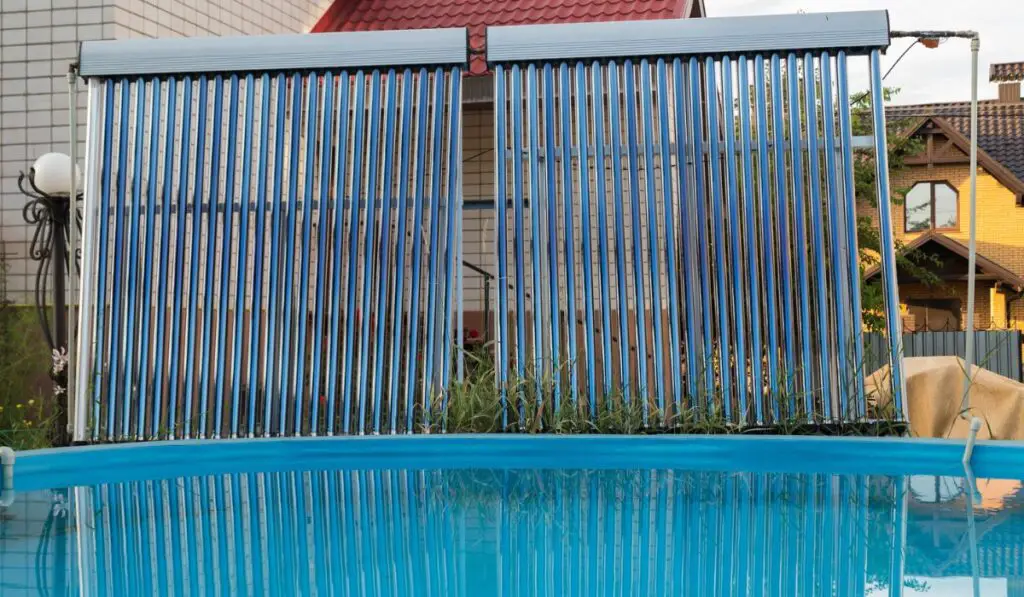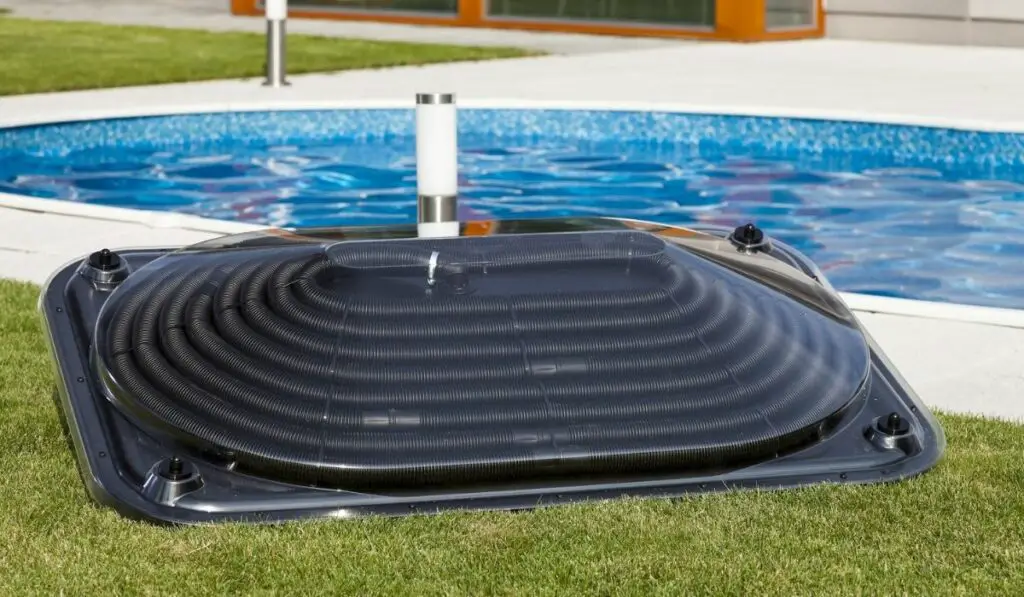Pool heaters are very convenient and are designed to keep your pool warm and swim-ready all year. But once your heater is installed, there’s a chance it will start acting up after continued use. A basic understanding of troubleshooting will help you understand how to solve these problems when they arise so you can get back to enjoying your pool!
If your pool heater isn’t working, check whether it has electricity or the pilot light is lit. For solar heaters, ensure they’re in direct sun and confirm through the device. Hire a professional to fix electric/gas units that won’t start. For solar units, consider adding more modules.
With so many different pool heaters available today, troubleshooting can be tricky. Don’t worry, though, because we’ll help you narrow down the source of the problem with some simple steps. We’ll also highlight the common issues to look out for.
Internal Factors

Even experienced pool owners can run into trouble when it comes to maintaining the heater because there is a complex internal network of components to keep track of.
And before we go too far, not that you’ll want a thermometer like this one (on Amazon) on hand, that’s waterproof and will allow you to quickly take temperature measurements that will help you understand and diagnose the problem.
A floating thermometer in the pool will also streamline your measurements, allowing you to quickly gauge the performance of the heater across a few hours, or across the night. Getting the data to understand the problem, quickly, so that you can make decisions, will help make all of this go a bit smoother! Luckily these are extremely cheap, like this Rubber Ducky model (on Amazon).
Something as simple as dirty filters or the good old mechanical breakdown are two of the most common reasons why the pool heater stops working. But what are all the possible causes that you should consider as you troubleshoot your heater?
The Power Supply
The power supply is the most common internal issue regarding a swimming pool heater. The good news is that most related problems are easy to troubleshoot and can be fixed easily. Here’s how:
- First, check the power supply to confirm the pool heater is receiving electricity. If there’s power, you should check if all wires are connected to their respective terminals.
- If the connection is good, check whether blown fuses or tripped breakers are in your home’s fuse box or circuit breaker panel. This is especially important if you have an older home and haven’t replaced your fuses recently. One may have blown out due to age or excessive wear-and-tear.
- Replace any tripped breakers or blown fuses with others with the same amperage rating as the original before plugging in your heater again.
You should also check the voltage at the pool heater in relation to a known working outlet with power on. If there’s no voltage, you’ll need to check your wiring and ensure you have a live wire running through at least one leg of your circuit breaker panel.
Temperature Settings
If the temperature setting is not relatively high, your water may feel cold, even though the heater is working. The best solution is to adjust and set the temperatures at a higher level. And you should check the outdoor temperatures as they will guide you on the settings.
Although some heaters can operate at low temperatures, ensure the setting is above 60℃. Another helpful trick is covering your heater with a solar cover. This hack helps the heater avoid heat loss and operate in a warm environment, making it slightly more effective.
Pool Pump
If your heater is not working, the pool pump may be the culprit.
The pool pump is responsible for circulating water through the heater, so it remains warm. However, when the pump is faulty, it’s unable to circulate water through the heater or return it to the pool. This then causes your pool’s water temperature to drop significantly.
The best way to troubleshoot a faulty pool pump is by checking its power supply and ensuring it’s plugged in correctly. Then check for debris or other objects obstructing the water flow through your system. If none of these tips work, it is probably a pressure issue.
Pool Pump Types
Generally, after installing a heater, your pump may not provide the requisite pressure, and the best solution is to upgrade to a variable speed pool pump type. Here is a quick view of the three most common pool pumps.
- Variable speed pool pumps: They are the most popular because they’re less noisy, more efficient, and operate using a permanent magnet motor. Additionally, you can set an exact flow rate.
- Two-speed pool pumps: These pumps have a low and high-speed level, allowing you to choose between the two based on usage. For example, high speeds are best when cleaning a pool or using a heater.
- One-speed pool pumps: They are traditional and the most basic pump types. Unfortunately, these pumps are also noisy and have a low-speed operation, thus not ideal if you have a heater in your pool.
Pilot Light
A pilot light is a low-pressure gas flame that burns continuously. It ignites the heater’s burners and keeps them lit when the main power switch is off.
What if the pilot light is off? Well, this indicates that:
- There is low gas pressure.
- Air getting in is not ideal, there’s not enough oxygen for combustion to happen properly or safely.
- The heater has a problem venting.
If the light is on, ensure the gas valve and heater are on. Other measures include turning the gas control knob ON and ensuring the pilot light is on. If it isn’t, resetting or relighting the pilot may be necessary.
If there are no other problems, try lighting the pilot again by turning the small wheel to produce a good flame. If that doesn’t work, hold down a button while you turn this wheel until your heater starts working correctly again.
There are also instances where the heater is turned on, and the burner doesn’t come on. This could be because of thermocouple problems, so check your heater’s manual to learn how to relight the pilot light and fix thermocouple issues.
Finally, if the pilot light is lit but still won’t ignite the burners in your pool heater, there’s a high chance of an issue with your gas line or gas valve. But check for these issues before confirming this is an isolated incident caused by faulty wiring/piping/gas valves or something entirely unrelated, like bad weather conditions.
No matter what, if you smell gas during this process be sure to stop and wait for it to clear. A small amount of gas may be purged from the heater without being burned, and that is normal, but if you smell gas continuously, you should stop and contact a professional.
External Factors

Now that we’ve covered the internal factors let’s talk about external ones. The most common cause of pool heater failure is a leak or rust on the unit’s exterior. This can happen due to improper installation or if you live in an area where it rains frequently and high winds can knock over trees.
If this is why your pool heater broke, repair may not be feasible because repairing damaged parts will cost more than buying a new one. In many cases, it isn’t worth spending money on something like this unless you plan to use your pool again soon.
Some people opt to buy replacement parts instead of repairing broken ones because they don’t want potential leaks or rust showing up later down the road unexpectedly. If this sounds like something you might do, we recommend getting quotes from different companies before making any purchases, so there won’t be any surprises later.
1. Leaks and Rust
If you see any water on your pool deck or floor, the chances are that your heater has sprung a leak. Pool heaters can leak through the seal or around the heating element, and even small leaks can cause much damage over time. This is why you must fix all leaks immediately when you discover them.
If there are no visible leaks in the area surrounding your heater, check for rust on and around it. Rust usually forms over time on exposed metal surfaces if they aren’t adequately protected from exposure to moisture and air.
Unfortunately, rust isn’t always easy to detect because its appearance varies depending on the type of metal. You can, however, check for small amounts of orange-brown discoloration around an opening, as this often indicates corrosion.
While this type of corrosion usually doesn’t affect functionality, it could signify that something else needs attention.
If there’s enough discoloration to turn your eyes red after looking at it for too long, then corrosion has already occurred in those areas and should be repaired immediately.
Thermostat
The thermostat regulates the energy that goes into heating your pool’s water. When the temperature drops below a certain level, the heater turns on. But if the thermostat doesn’t detect any temperature changes, there will be no heat.
The two leading causes of this problem are usually a faulty thermostat or an electrical problem. So, the first thing you should do when troubleshooting this issue is check the thermostat itself.
Make sure it is set correctly and is connected to the power supply. If these two factors check out, you may have an electrical problem in your home or backyard pool area.
Too High of Temperature
When the thermostat is set to a too high temperature, the gas valve stays open and allows gas to flow into the heater’s burner. This causes the burner to ignite and stay on until the thermostat cools down enough for the flame sensor to be satisfied.
When this happens, it can cause damage to your heater and even pose a fire hazard if you aren’t careful. The best way to troubleshoot a problem like this is by checking the thermostat settings first. This is easy with a digital thermostat, but if you have an analog one, you’ll need to stick your hand up and feel around for the adjustment screw.
